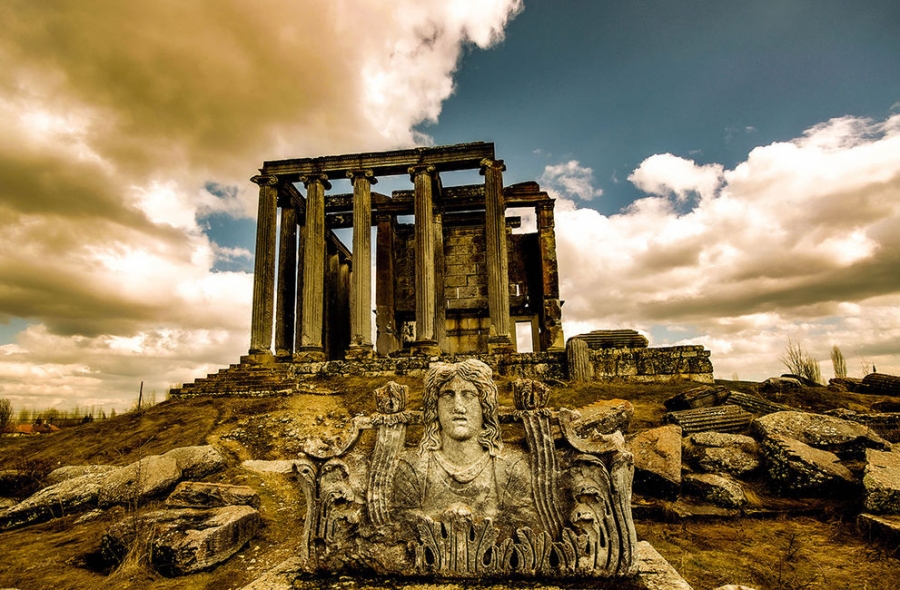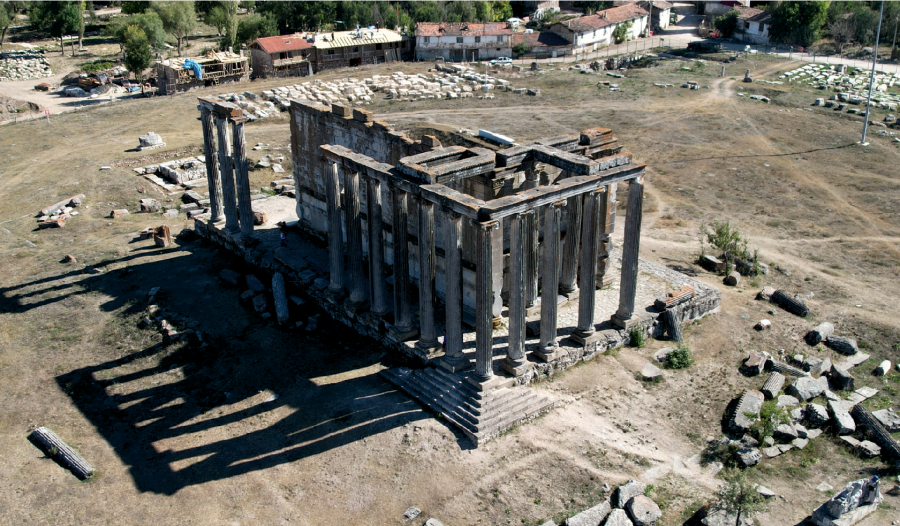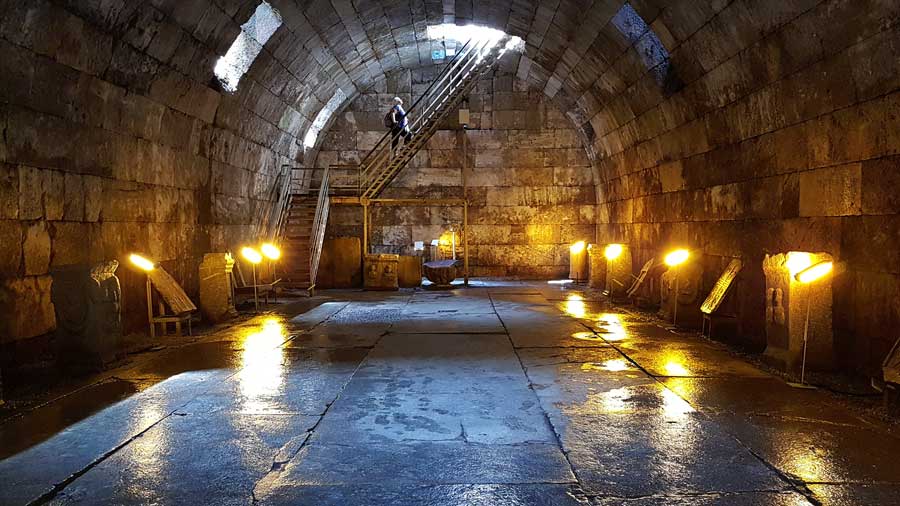Temple of Zeus in Aizanoi
.jpg) The temple which positioned at the center of the city, built on a mound which dates back early as 3000 BCE. The beginning of the construction is in 92 CE in the Roman Empire Domitianus period (81 – 96 CE), and continued until Hadrianus period (117-138 CE). The remnants of the temple reached today as it was with some simple interventions. It is the best preserved Temple of Zeus in Anatolia. The temple which is built with Oktastylos (eight columns at the front) type and Pseudodipteros plannning, has 8 columns in the short side and 15 columns at the long side, and built onto a podium which is in size 35 x 55 meters. Pronaos (entrance), naos/cella (main/sacred room) and Opistodomos at the rear (back room) are the main places of the temple, and beneath the ground level there is a room which covered by a semi-circular vault, and at the same size with the temple.
The temple which positioned at the center of the city, built on a mound which dates back early as 3000 BCE. The beginning of the construction is in 92 CE in the Roman Empire Domitianus period (81 – 96 CE), and continued until Hadrianus period (117-138 CE). The remnants of the temple reached today as it was with some simple interventions. It is the best preserved Temple of Zeus in Anatolia. The temple which is built with Oktastylos (eight columns at the front) type and Pseudodipteros plannning, has 8 columns in the short side and 15 columns at the long side, and built onto a podium which is in size 35 x 55 meters. Pronaos (entrance), naos/cella (main/sacred room) and Opistodomos at the rear (back room) are the main places of the temple, and beneath the ground level there is a room which covered by a semi-circular vault, and at the same size with the temple.
4 columns at the West and 10 columns at the North side of the temple reached today. There were 42 columns surrounding the temple when it was built. The monolithic columns which provides the temples monumentality, have 9.51 meters length including pedestals and capitals. The pedestals are in Asia-Ionic type, except the ones in Pronaos, they are Attic-Ionic. The have 24 rows of grooves. The width of the concave grooves is 11 cm at the bottom and 9.5 cm at the top. These measures shows the delicacy of the columns. At the top level of the grooves there are amphorae figures. These figures enriches the appearance of Ionic capitals with volutes. The architraves with three rows of fascia are the remnants of the entablature which reached today. There two main aspects for the room with semi-circular vault beneath the surface. One of them is a point of view that the room used as a storage for precious supplies. The other one is, the Cult of Meter Steunene which originally placed 4 km South of the city, carried here after the temple is built. According to ancient sources and authors, Aizanoians believed Meter Steunene gave birth to Zeus in a cave called “Steunos” which is in Aizanoi and gave its name to the goddess. Therefore, the interpretations which says these two different cults got united in a single temple depends on these resources.
The acroter that replaced on the ground west of the temple, is thought to be Kybele placed between acanthus branches and leaves, and the acroter replaced on the ground at the front of altar east of the temple, and which is broken, is thought to be Zeus.
The encryptions on inner and outer surfaces of Pronaos walls are in Latin and Greek, and are the examples of the debates going on in Hadrianus period, about the rents of kleros’ (farmlands).
Çavdar Tatars who came to the region in 13th century CE, after the Mongol invasion of Anatolia, used the temple as a fort. They engraved figures of horses, horsemans and archer cavalries on the surface of Cella walls. In these depictions, the cavalries who uses bows and arrows, depicted when shooting arrows backwards as much as shooting forwards. Besides the archers, there are depictions of cavalries who carries brigadiers, man playing kopuz (a kind of lute) and cross figures.
Last Update Date: 14 June 2023, Wednesday


